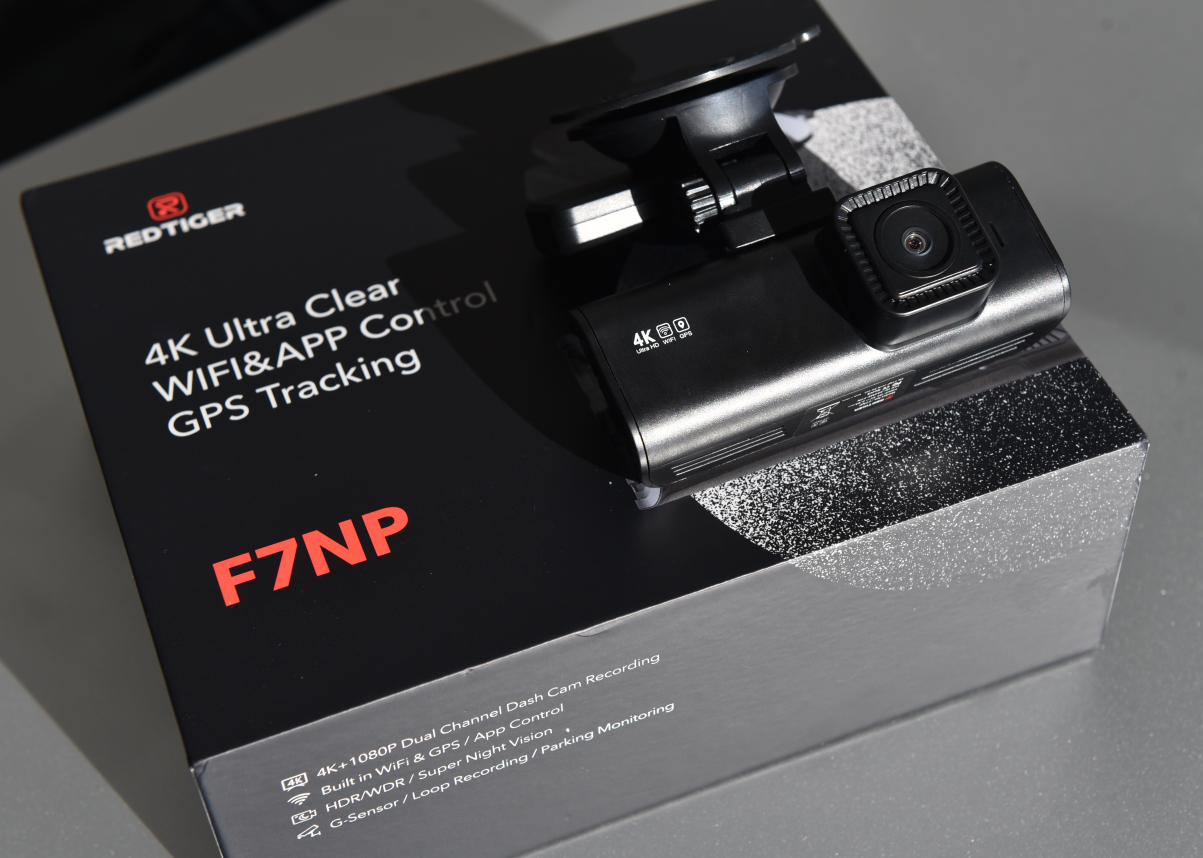Inside this Article:
Ever felt the adrenaline rush of navigating through winding roads, dirt trails, and unpredictable terrains? That’s the essence of rally racing—a thrilling motorsport where drivers and co-drivers (navigators) work together to complete stages as quickly as possible, often in rugged environments.
If you are also interested in rally racing but don't know how to start, then take a few minutes to read this article and you will get the answer.
Introduction
Rally racing is not like traditional racing, where drivers driving their F1 formula compete fiercely in the narrow corners, to determine cornering speed and top speed.
It is not as intense as a traditional racing competition, but more like a racing games that everyone can accept, just like playing PS5 road racing games with your friends in the living room, whether winning or losing, it is a valuable experience and enjoyment for participants.
Moreover, for beginners, you can even drive your own family car to participate in rally races as long as your vehicle is in good condition and meets the basic requirements of the competition——having a driver's license.
How much does it cost to participate in a rally race?
Rally racing attracts a diverse group of people, all united by their passion for speed and adventure. However, ideals are always beautiful, but let's discuss a reality first - how much does it cost to participate in a rally race.
Based on Sam Albert's experience as the winner of the North American Rally Cup, it is calculated that participating in a rally would cost approximately $4,630, including registration fees, hiring a co pilot, hotel and meal reservations, and more. If cross-border fees are added, it will cost approximately $8,418. This doesn't even include the cost of modifying and maintaining his car.
Yes, this is a very money consuming sport, which is confirmed by the data given by Sam based on his professional experience and the comment on the Reddit.
Therefore, if you have made up your mind to participate in a rally but no sufficient money, you have to strictly control the expenses during the competition based on your financial situation. Such as keeping the budget for participating in the rally within $2,000.
Please remember, regardless of budget, the common denominator for anyone interested in rally racing is deep love for cars, driving, and the thrill of pushing both to their limits.
(Image from Dirtfish)

How to Start Rally Races with a Low Budget?
If you're on a tight budget but eager to get into rally racing, the first step is to immerse yourself in the community. Here’s how:
-
Volunteer with Local SCCA Clubs: The Sports Car Club of America (SCCA) is a great starting point. Volunteering at events gives you hands-on experience with the logistics of rally racing. You'll meet seasoned drivers, co-drivers, and mechanics, all of whom can offer valuable advice and insights. Plus, volunteering is a fantastic way to make connections and learn the ropes without any financial commitment.
-
Network with Experienced Participants: As you volunteer, take the opportunity to talk to as many people as possible. Building relationships with experienced drivers and co-drivers can open doors to further opportunities, such as becoming a co-driver yourself. Many drivers started as volunteer and navigators, learning the intricacies of rally racing before getting behind the wheel.
-
Start Small with Local Events: Prepare a used car under $5000, then looking for smaller, local rally events where you can either participate with a minimal entry fee or spectate to learn more. Even with a modest car, you can enter novice-level events that focus more on skill and strategy than on having the most expensive equipment and car.
- Attract Sponsors: When you have enough rally race experience, you can search for some car accessories related manufacturers on Facebook or YouTube and ask if they can sponsor you. As a reward, you need to promote their products during the race, such as painting the sponsor logo on the car. If you are well-known enough in local, sponsors can even bear the cost of your race.
How to Start Rally Races with a High Budget?
If you have the resources to invest in rally racing, your path may look quite different:
-
Attend a Rally School: Investing in formal training is one of the best ways to start. Schools like Team O’Neil Rally School or DirtFish Rally School offer courses ranging from basic to advanced levels. These schools provide you with both theoretical knowledge and practical experience. Learning from experienced instructors will give you a solid foundation, making you more confident on the track.
-
Drive a Variety of Cars: Don't limit yourself to just one type of car. Try to get behind the wheel of rear-wheel, front-wheel, and four-wheel-drive vehicles. Each type offers a different driving experience and understanding these differences is crucial in rally racing. For example, driving a rear-wheel-drive car will teach you about car control and handling, which is essential for tight, technical stages.
-
Buy or Build Your Own Rally Car: With a high budget, you can afford to either purchase a pre-built rally car or modify one to meet rally specifications. This involves upgrading suspension, installing a roll cage, and making other modifications to ensure the car is ready for the demands of rally racing.
-
Start with Local Events: Once you have your own racing car, you can try participating in some leisure rally races with slightly higher registration fees. For example, the Long Tail Rally , with a registration fee of $15,000, is known for its rich variety of extracurricular activities. The organizers of the Long Tail Rally also have extensive organizational experience, such as holding a race on the East Coast of the United States in 2024, where everyone had a great time.
-
Participate in National or International Events: Once you're confident in your skills, you can enter more competitive national or even international rally events. The experience at this level is unparalleled, and it can be the gateway to a serious rally racing career.

What Equipment Is Required Before Rally Races?
Before a rally, you need to prepare a lot of things to deal with unexpected situations on the road, having the right equipment is crucial. Here’s a breakdown of what you may need:
-
Car Modification Parts: If you have sufficient funds, modifying your car can help you perform better in races. Modifications include upgrading the suspension, reinforcing the chassis with a roll cage, adding skid plates to protect the underbody, and fitting rally tires for better grip on various terrains. Brakes and cooling systems also need to be upgraded to withstand the intense conditions.
-
Safety Gear: Safety should always be your top priority. You’ll need a helmet that comply with FIA standards. A fire extinguisher, first aid kit, and intercom system are also mandatory for communication between the driver and co-driver.
-
Maintenance Tools: Keeping your car in top condition requires regular maintenance. A basic toolkit including wrenches, jacks, tire pressure gauges, and spare parts is essential. Those tools can help you simply repair your vehicle.
-
Dash Cam: A dash cam, such as the Redtiger F17 , is a valuable companion on the rally stage. Not only does it capture your races, allowing for post-race analysis and reflection, but it also serves as evidence in case of any incidents.
Conclusion
Rally racing is more than just a sport; it's a way to challenge yourself, experience the thrill of high-speed driving, and join a community of like-minded enthusiasts.
Whether you’re starting on a tight budget or have the money to invest heavily, there’s a place for you in the rally.
The key is to start with smart mind, build your skills and connections with people, and gradually work your way up to more competitive events.
With the right preparation and equipment, you can turn your rally racing dreams into reality!
FAQs About Rally Race
1. What type of car is best for rally racing?
A: The best car for rally racing depends on the event and your skill level. Beginners often start with affordable, front-wheel-drive cars like the Ford Fiesta or Subaru Impreza, which are reliable and easy to handle. As you progress, you might upgrade to all-wheel-drive vehicles, which offer better traction and handling on various terrains.
2. Do I need a co-driver for rally races?
A: Yes, most rally races require a co-driver. The co-driver navigates, providing critical instructions based on the rally's pace notes, which are essential for navigating the course safely and efficiently. A good co-driver is key to success in rally racing.
3. How can I practice rally driving without entering a competition?
A: You can practice rally driving by attending rally schools, participating in track days, or even joining local autocross events. These opportunities allow you to develop your driving skills in a controlled environment before stepping into competitive rallying.
4. Is rally racing dangerous?
A: Rally racing does carry inherent risks, as it involves high-speed driving on unpredictable terrains. However, with the proper safety gear, training, and vehicle modifications, the risks can be managed. Rally racing organizations also enforce strict safety standards to protect participants.
5. What licenses or permits do I need to enter a rally race?
A: To participate in most rally races, you’ll need a driving license, which can be obtained through the driving test. You may also need a medical clearance to ensure you're fit to race, along with specific vehicle and safety inspections to comply with rally regulations.




Leave a comment
All comments are moderated before being published.
This site is protected by hCaptcha and the hCaptcha Privacy Policy and Terms of Service apply.